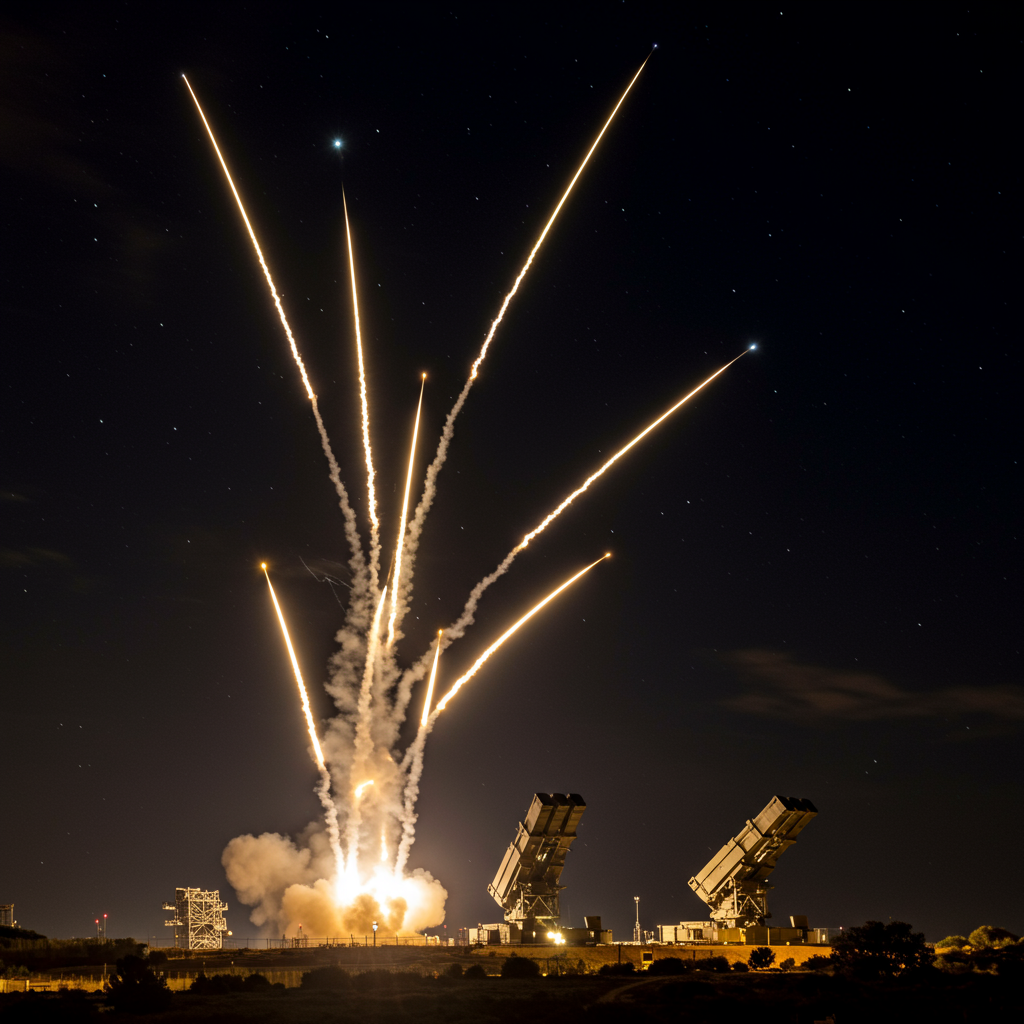In the intensifying conflict between Israel and Iran, a critical element is the aerial exchange of strikes and counter-strikes. While Israel possesses a highly advanced, multi-layered air defense system, recent Iranian barrages have demonstrated that it is not entirely impenetrable. Understanding this complex shield is crucial to grasping the dynamics of the confrontation.
Israel’s Multi-Layered Air Defense System
Israel’s defense network is designed to intercept a range of threats, from short-range rockets to long-range ballistic missiles. It’s not a single system, but rather an integrated “shield” composed of several tiers working in concert:
Iron Dome: The lowest layer, primarily intercepts short-range rockets (up to 40 miles). Developed after the 2006 conflict with Hezbollah, it boasts a high claimed success rate against typical rocket threats and has been extensively used since October 2023.
David’s Sling: Covers medium-to-long range missiles.
Barak-8: Also intercepts medium-range missiles.
Arrow Systems (Arrow 2 & Arrow 3): Designed for long-range ballistic missile threats, intercepting targets at high altitudes, even outside the Earth’s atmosphere. Developed with US involvement, these are the primary interceptors against threats like those posed by Iran’s ballistic arsenal.
THAAD: A US-supplied system for ballistic missile defense across various ranges.
Air-to-Air Defense: Israeli aircraft are also used to intercept incoming drones.
These systems rely on radars to detect threats, command centers to evaluate them, and launchers firing interceptor missiles. Often, multiple interceptors are launched per incoming target to ensure a higher probability of success.
How Iranian Missiles Can Penetrate the Shield
Despite the sophistication of Israel’s defenses, some Iranian projectiles have managed to break through, causing damage and casualties. Experts point to several potential tactics employed by Iran:
Overwhelming Volume: Launching a massive barrage of drones and missiles simultaneously can overwhelm the defense system’s finite capacity and exhaust its stock of interceptor missiles.
Advanced Missile Technology:
Hypersonic Missiles: Missiles like Iran’s Fattah-2 travel at extreme speeds, drastically reducing reaction time for defenses. They also use Hypersonic Glide Vehicles (HGVs), maneuverable warheads that don’t follow predictable trajectories, making interception incredibly difficult for systems designed to anticipate a target’s path.
Cruise Missiles: While slower, missiles like the Hoveyzeh can fly low and steady, potentially evading radar detection by “sneaking” under coverage.
Tactics and Deception: Using decoys – false targets appearing on radar – can trick the system into wasting valuable interceptors. Some missiles may also employ radar suppression technologies to reduce their detectability.
Shifted Targeting Strategy: Compared to previous attacks on military infrastructure in less populated areas, Iran is now targeting Israel’s most populated cities and even military headquarters multiple times daily. This increases the likelihood of damage and casualties even if the defense systems maintain their effectiveness rate against individual threats.
The increased destruction seen in Israel during recent exchanges is attributed more to this shift in Iranian targeting strategy and the sheer volume of attacks than to a decrease in the defense system’s overall effectiveness rate.
The Impact on the Ground
When missiles do get through, the consequences can be severe. Recent attacks have caused extensive damage, including hitting hospitals and energy infrastructure. Casualties have also been reported. A unique challenge noted is that even when intercepted, ballistic missiles can break into dangerous fragments, sometimes requiring interceptors to shoot down falling debris.
Israel’s Offensive Counterpart: Degrading the Threat
Understanding that defense alone is not sufficient, Israel has also launched extensive offensive operations targeting Iran itself (“Operation Rising Lion”). These strikes aim to degrade Iran’s capacity to launch attacks and prevent it from developing nuclear weapons. Targets have included:
Iranian Air Defenses: Significant numbers of Iranian air defense systems have been struck, contributing to Israel’s claimed air superiority over western Iran and enabling deeper strikes.
Nuclear Facilities: Sites like the underground Natanz enrichment facility have been hit. However, destroying deep underground facilities like Fordow remains challenging and might require specialized munitions.
Missile Infrastructure: Military bases, drone manufacturing sites, and critical missile storage areas have been targeted.
Mobile Ballistic Missile Launchers: A key focus is on destroying mobile launchers, which are difficult to locate due to their “shoot and scoot” nature. Israel claims to have destroyed a significant portion of these, reducing Iran’s future strike capability.
- Energy and Regime Infrastructure: Strikes have also targeted elements of Iran’s energy sector and sites linked to domestic surveillance and repression, potentially aiming to exacerbate internal pressure on the regime.
- www.npr.org
- www.aljazeera.com
- www.ajc.org
- www.atlanticcouncil.org
- www.understandingwar.org
Sustainability and the Attritional Conflict
The ongoing conflict has been described as attritional. While Israel’s defense is highly capable, it relies on expensive interceptors, and questions arise about the sustainability of its arsenal against persistent, high-volume attacks. Similarly, Iran’s ability to sustain its missile barrages depends on its remaining stockpile and mobile launchers. The vast distance between the two countries also presents logistical challenges for Israeli operations deep inside Iran.
A Dynamic and Complex Struggle
The aerial conflict between Israel and Iran is a high-stakes, dynamic struggle. Israel’s sophisticated multi-layered air defense provides a crucial shield, but it faces a determined adversary employing advanced technology, high volume, and tactical shifts to overcome it. Simultaneously, Israel is engaged in an intense offensive campaign to degrade Iran’s military and nuclear capabilities, seeking to reduce the threat at its source. This complex interplay of defense and offense defines a key front in the escalating regional confrontation.


